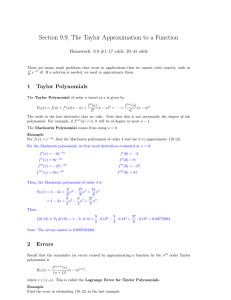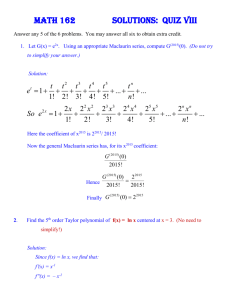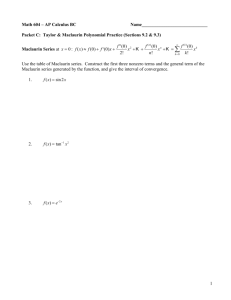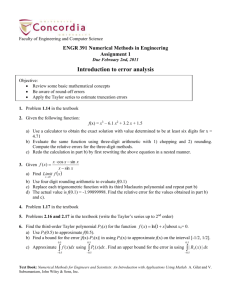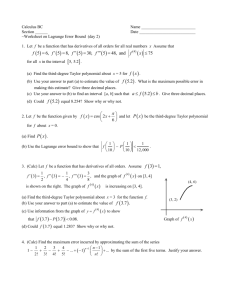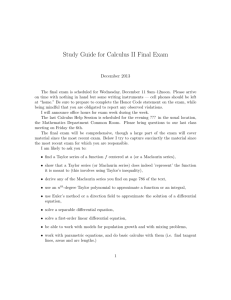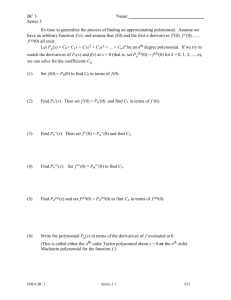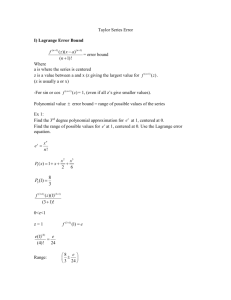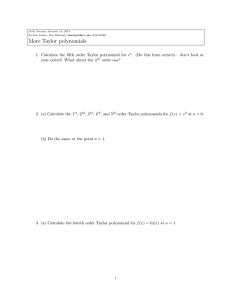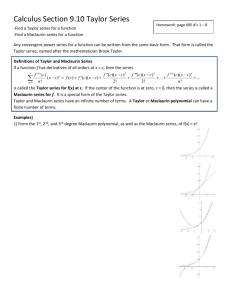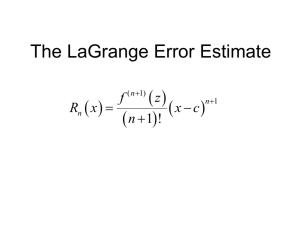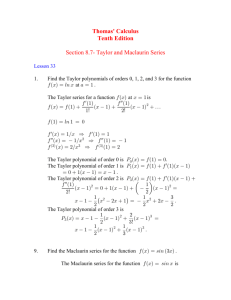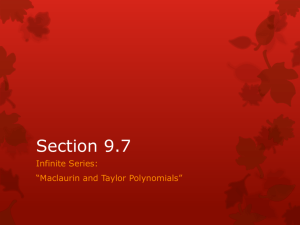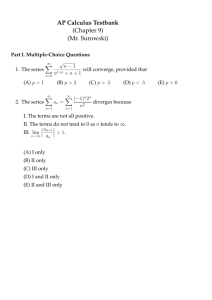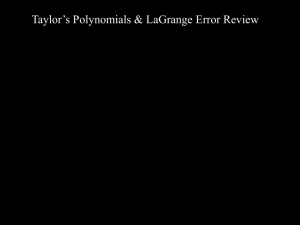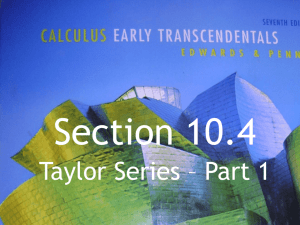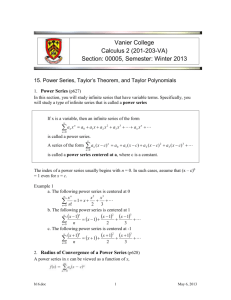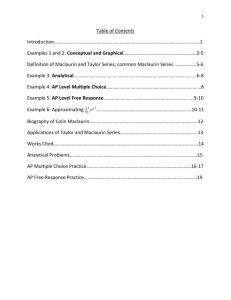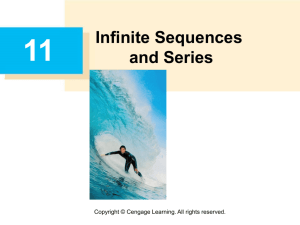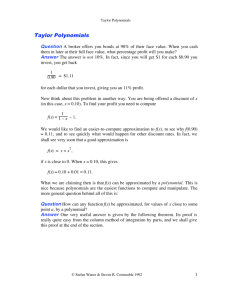AP Calculus BC Homework - Chapter 8B Taylor, MacLaurin, and
advertisement
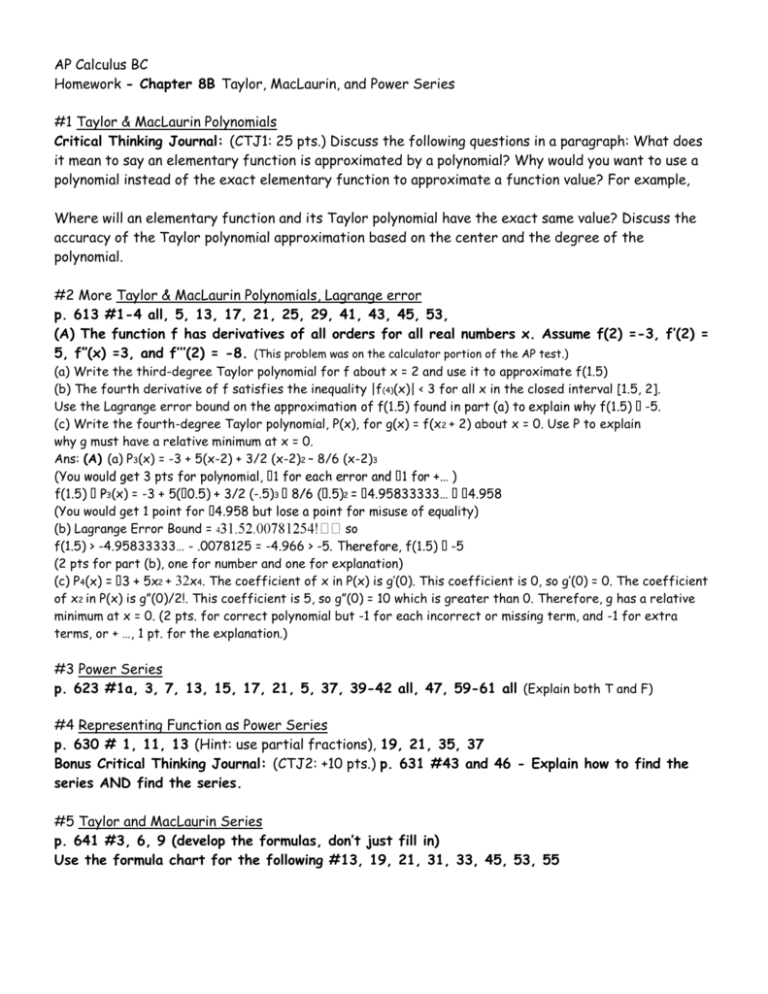
AP Calculus BC Homework - Chapter 8B Taylor, MacLaurin, and Power Series #1 Taylor & MacLaurin Polynomials Critical Thinking Journal: (CTJ1: 25 pts.) Discuss the following questions in a paragraph: What does it mean to say an elementary function is approximated by a polynomial? Why would you want to use a polynomial instead of the exact elementary function to approximate a function value? For example, Where will an elementary function and its Taylor polynomial have the exact same value? Discuss the accuracy of the Taylor polynomial approximation based on the center and the degree of the polynomial. #2 More Taylor & MacLaurin Polynomials, Lagrange error p. 613 #1-4 all, 5, 13, 17, 21, 25, 29, 41, 43, 45, 53, (A) The function f has derivatives of all orders for all real numbers x. Assume f(2) =-3, f’(2) = 5, f”(x) =3, and f’’’(2) = -8. (This problem was on the calculator portion of the AP test.) (a) Write the third-degree Taylor polynomial for f about x = 2 and use it to approximate f(1.5) (b) The fourth derivative of f satisfies the inequality |f(4)(x)| < 3 for all x in the closed interval [1.5, 2]. Use the Lagrange error bound on t -5. (c) Write the fourth-degree Taylor polynomial, P(x), for g(x) = f(x2 + 2) about x = 0. Use P to explain why g must have a relative minimum at x = 0. Ans: (A) (a) P3(x) = -3 + 5(x-2) + 3/2 (x-2)2 – 8/6 (x-2)3 3(x) = -.5)3 2 (You would get 1 point for (b) Lagrange Error Bound = 4 so f(1.5) > -4.95833333… - .0078125 = -4.966 > -5 (2 pts for part (b), one for number and one for explanation) (c) P4 2 + 32x4. The coefficient of x in P(x) is g’(0). This coefficient is 0, so g’(0) = 0. The coefficient of x2 in P(x) is g”(0)/2!. This coefficient is 5, so g”(0) = 10 which is greater than 0. Therefore, g has a relative minimum at x = 0. (2 pts. for correct polynomial but -1 for each incorrect or missing term, and -1 for extra terms, or + …, 1 pt. for the explanation.) #3 Power Series p. 623 #1a, 3, 7, 13, 15, 17, 21, 5, 37, 39-42 all, 47, 59-61 all (Explain both T and F) #4 Representing Function as Power Series p. 630 # 1, 11, 13 (Hint: use partial fractions), 19, 21, 35, 37 Bonus Critical Thinking Journal: (CTJ2: +10 pts.) p. 631 #43 and 46 - Explain how to find the series AND find the series. #5 Taylor and MacLaurin Series p. 641 #3, 6, 9 (develop the formulas, don’t just fill in) Use the formula chart for the following #13, 19, 21, 31, 33, 45, 53, 55
